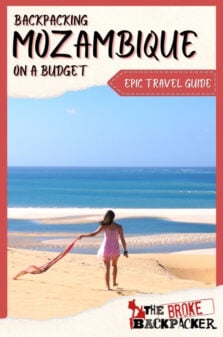Mozambique first popped on my radar a couple of years back for reasons I can’t even recall. All I remember is that it appeared to be a gorgeous country with amazing beaches, great food, and interesting indigenous cultures.
When I was backpacking in South Africa in 2017, I resolved to make a trip to Mozambique and find out about it for myself. I was concerned about its state following the civil war, but enthusiastic nonetheless.
Upon finishing backpacking in Mozambique, I was more than satisfied, ecstatic even! Backpacking in Mozambique was one of the highlights of my trip through Africa as it was indeed gorgeous and exotic.
Mozambique delivered in every way possible and I can say confidently that is ready to be explored by backpackers.
Travel in Mozambique is still a bit rough though, more so than most other countries I’ve been to. For those who plan on visiting Mozambique, a travel guide will be very helpful, which precisely why we’ve written one!
With this travel guide for Mozambique, we’ll cover a range of topics and answer questions like “is it expensive?” and “is it safe?” Everything and then some are covered here! Follow my travel advice for Mozambique and you’ll be more than prepared for this amazing country.
Why Go Backpacking in Mozambique?
Backpacking Mozambique probably isn’t the kind of trip most people have on their bucket list. Hell, I’m sure some couldn’t even place it on a map, let alone have an idea of what to do there.
Many may have disregarded Mozambique all together as some war-torn African nation, like some setting of Blood Diamond or The Constant Gardener. Then again, many well-seasoned travelers know traveling to Mozambique can be epic on all levels.
Mozambique is one of the best countries that I visited while backpacking in Africa. There is a lot going on here and trying to sort through all of it may seem overwhelming at first. Luckily, this Mozambique travel guide is here to help you triumph through the complications and better navigate the country.
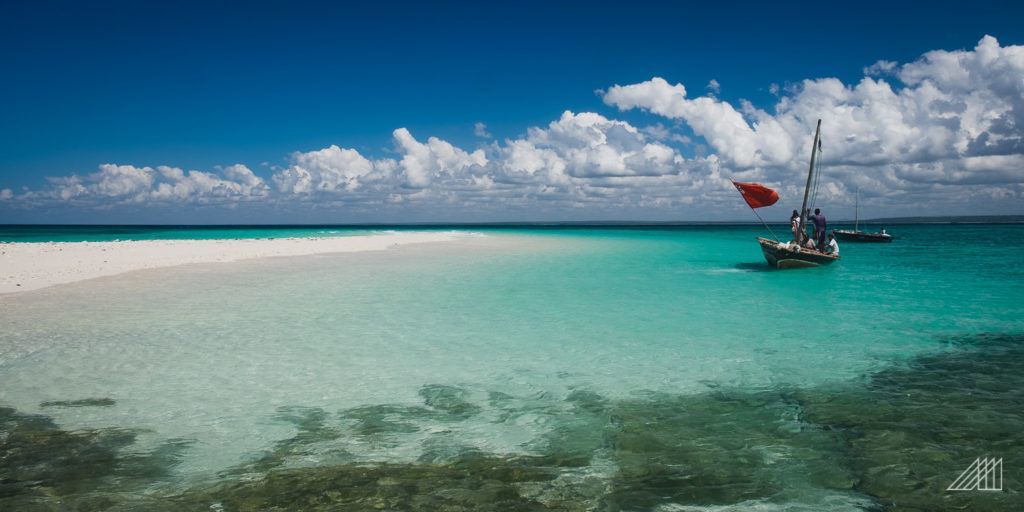
The Broke Backpacker is supported by you. Clicking through our links may earn us a small affiliate commission, and that's what allows us to keep producing free content 🙂 Learn more.
First, we’re going to present the various itineraries for the best holidays in Mozambique. Each one is specially drafted to give you the best possible experience.
Afterward, we’re going jump into the meat of the article – the destinations – and then follow with some more specific information e.g. Costs, Food, Diving, etc. By the end of this guide, you’ll be equipped with all of the necessary tools to go backpacking around Mozambique and on a budget!
Best Itineraries for Backpacking Mozambique
Below is a list of four travel itineraries for backpacking Mozambique. I have created three itineraries for Mozambique by region: South, North, and a Grand Tour. The itineraries vary from 1 week to 4 weeks in length and cover the majority of the best places in Mozambique to visit.
Backpacking Mozambique 1 Week Itinerary #1: The South
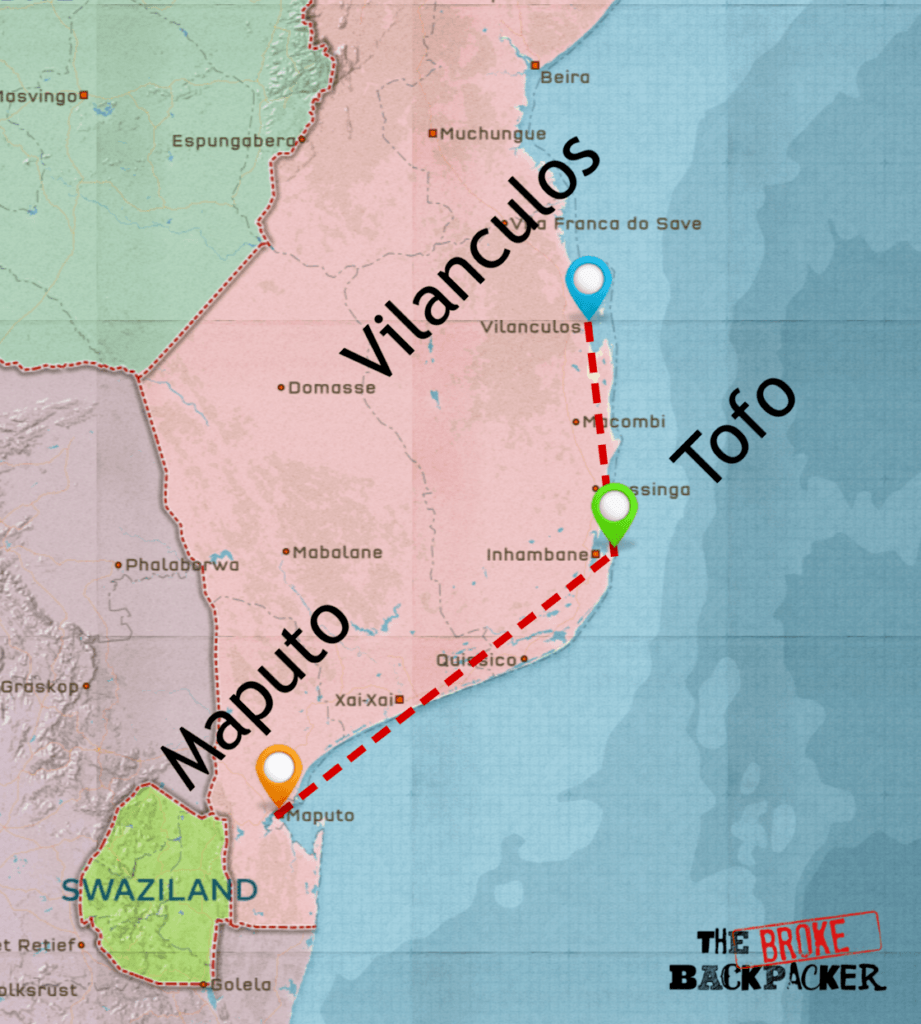
Check out some of the most popular and accessible locations in Mozambique! On this week-long itinerary for Mozambique, you’ll fly into Maputo and explore the killer beaches of Tofo and Vilanculos.
Fly into Maputo and overnight in the capital city. Depending on how much time you want to spend at the beach, you may have little time in the city. Then again, maybe you want to check out the killer parties here?!
Head to Tofo whenever you feel like it and get ready for some prime beach bumming. There isn’t much to do in Tofo besides lie in the sand and listen to the ocean. I’m sure the beautiful beach, crystal clear water, and friendly locals will be more than enough though.
This is also an excellent place to go scuba diving. I’ll cover this in more detail in our diving section.
After Tofo, head to Vilanculos if you’re into it. Vilanculos offers much the same as Tofo except at higher prices. If you’re willing to spend the money though, you could possibly see some of the most beautiful places in Mozambique, including the Bazaruto Archipelago.
Backpacking Mozambique 2 Week Itinerary #2: The North

Mozambique’s remote and distant northern reaches deserve more time because getting there and around can be very difficult.
With this 2-week itinerary for backpacking Mozambique, you should have plenty of time to see all of the North, including Ilha de Moçambique, Pemba, and the Quirimbas Islands.
Get to Nampula first and then catch a ride to Ilha de Moçambique. This aging island is like a time capsule from colonial times, full of interesting history. Wander around the stone alleyways and then grab some food at a local shack.
Next, head to Pemba for some beach time. The beaches here are very nice and the diving isn’t too shabby either. Don’t get too comfortable though as the nearby Quirimbas Islands are the piece de resistance on this trip!
After Peba, make the long, multi-leg journey to Ibo Island in the Quirimbas Archipelago. These islands are one of my favorite places that I went to while backpacking Africa, mostly for their beauty but also for their authenticity. Hire a local dhow and set sail on one of the coolest journeys of your life!
Backpacking Mozambique 4 Week Itinerary #3: Grand Tour
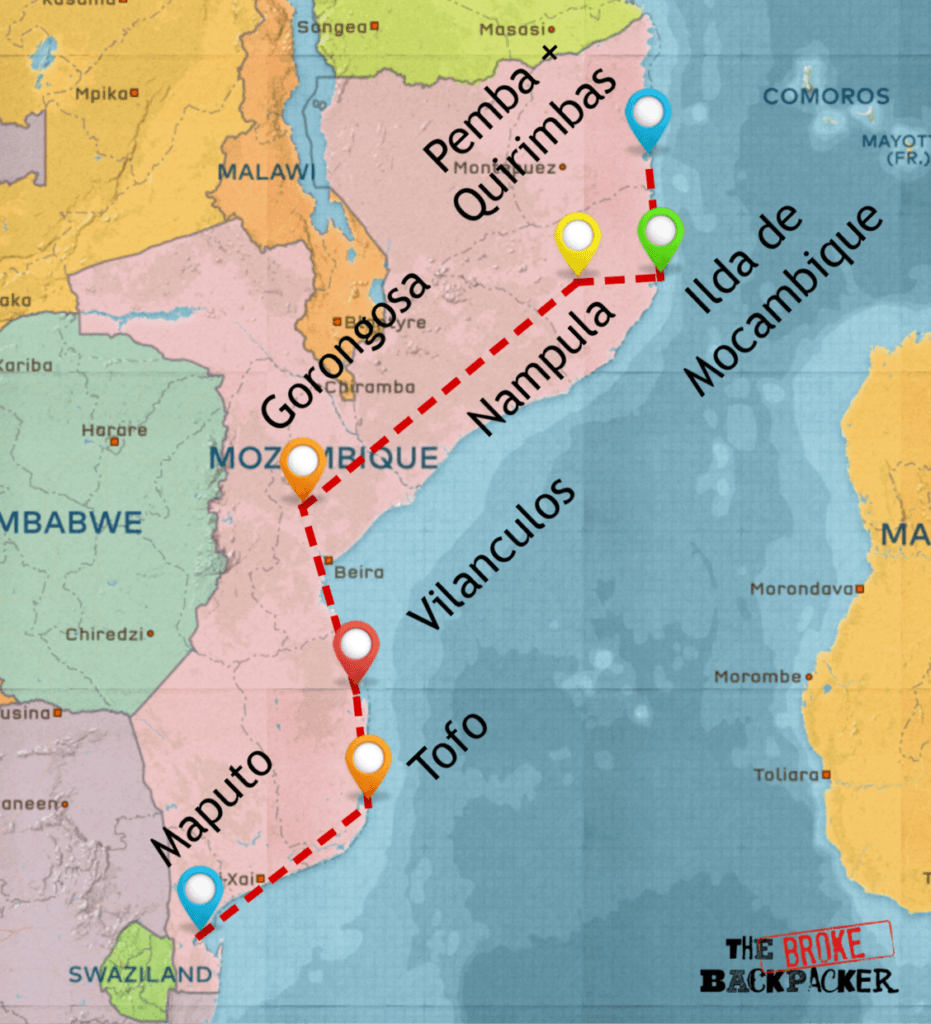
Combine the above two routes on this epic 4-week long itinerary for Mozambique! See both the North and South and everything in between while traveling for a month in Mozambique.
Go sailing in the Quirimbas; dive in the Bazaruto; laze in Tofo; party in Maputo; all of this plus much more are possible on this route. Maybe you’ll even get a chance to visit the recovering Gorongosa National Park along the way…
Want to save money on accommodation?
We got you. For reals.
Places to Visit in Mozambique
Below I will cover the best places to visit in Mozambique, including each of the destinations in my itineraries.
Backpacking Maputo
Maputo is the bustling capital of Mozambique. Now that the country is stable, business is good and the city is growing. Many foreign investors have started new enterprises in Maputo and so life is relatively cosmopolitan here.
Spread throughout Maputo are many cafes, restaurants, bars, clubs, and galleries worth visiting. The party and music scene in Maputo are particularly lively these days, and there seems to be no end to the opportunities of catching a good show or cutting loose in this city.
For the best bars and concert venues, check out our Sex, Drugs, and Rock ‘n’ Roll section for specifics.
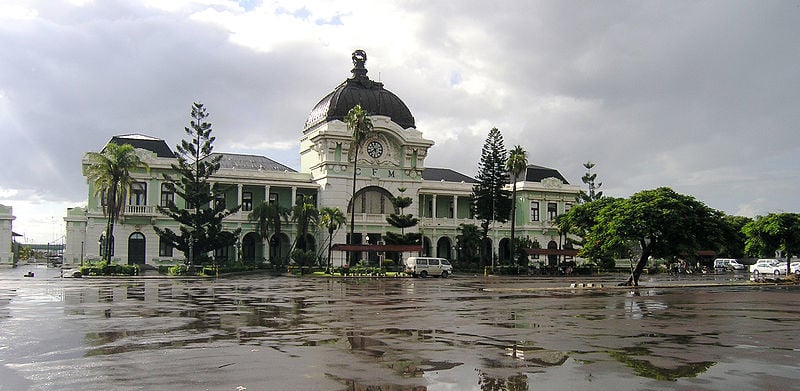
Many of the city’s top cultural attractions can be found between Avenida 24 de Julho and the Umbuluzi River. Some examples include the Cathedral of Our Lady of the Immaculate Conception, the Tunduru Gardens, the Casa de Ferro, and Maputo Fortress. There’s a great deal of Portuguese colonial architecture still present in the city as well, which gives a somewhat simulated South American/Latin vibe.
Being a coastal city, there are also several seaside boardwalks located on the southern shore of the city. You can go for a walk along these routes and take a break in the many parks that surround them, but don’t expect any beaches. The shores around Maputo are rocky and unsuitable for bathing.
If you’re wanting some proper sand, then there are several beaches near to Maputo that you can visit. Note that, until the new bridge is built, getting to these beaches usually requires an additional boat transfer or even 4×4. The best beaches near Maputo are across the bay at Catembe, Ponta do Ouro, Inhaca, and Ponta Malongane.
Backpacking Tofo Beach
If there is a ground zero for backpacker activity in Mozambique, it’s definitely found at Tofo Beach. It’s one of the best places to stay in Mozambique and travelers flock here for the awesome beaches and chances to go diving with the likes of manta rays and whale sharks.
Granted, it hasn’t reached levels that the likes of Phuket or Florianopolis have but that’s probably a good thing!
Getting from Maputo to Tofo is easy enough by local bus. Both Fatima’s and Base Backpackers in Maputo run a mutual shuttle service to Tofo (costing $14) and, for the extra cash, these can be convenient. The ride from Maputo to Tofo takes 8-9 hours on a good day.
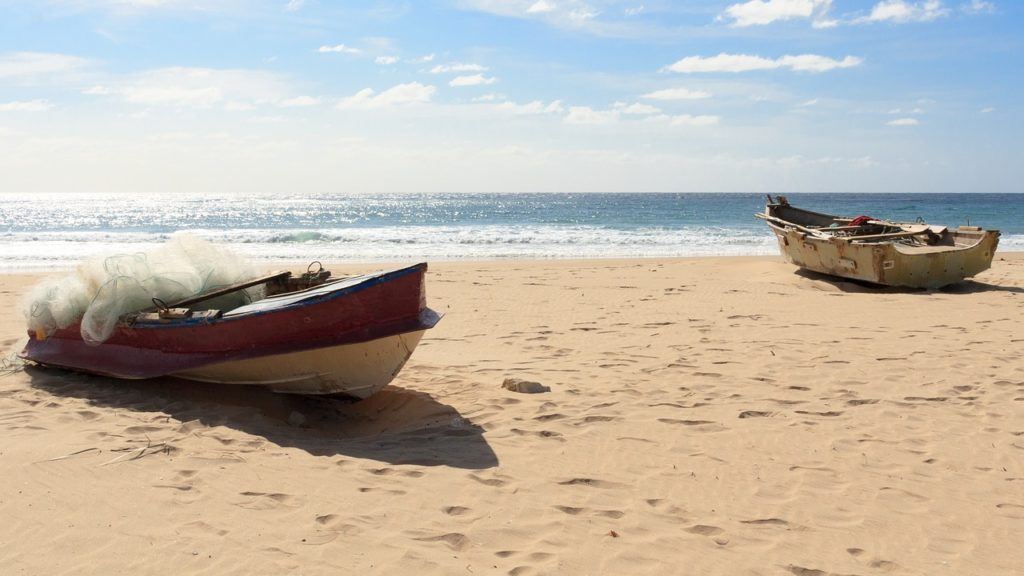
If you’re catching the local bus, be sure to arrive at the main station early – between 5am and 8am. The public bus will most likely drop you off in Inhambane, which is the regional hub. Tofo is another 30 kms away so you’ll need to catch a taxi.
Upon arriving in Tofo, you’ll find it to be a pretty unassuming place; a collection of beach shacks, fishermen huts, and a few resorts. You may trip over the occasional backpacker practicing yoga or doing his best impression of a drowning fish but that’s what it’s all about!
If you haven’t already caught on, the best things to do in Tofo are just laze about on the beach. Drink a beer at Fatima’s Nest; eat some matapa or piri-piri; maybe just take a nap at Tofinho Beach; this is the life.
Those looking for more thrilling activities will be happy to hear that there are plenty in Tofo. The diving around Tofo is among the best in Mozambique. Quad biking is available for around $30/day. Finally, there are several operators that offer sailing trips to Pig and Pansy Islands. Sweet stuff.
Backpacking Vilanculos and Bazaruto Archipelago
Vilanculos is like the higher-end version of Tofo Beach. With luxury hotels, a fleet of helicopters and wave runners, and the ultra-exclusive Bazaruto Archipelago in its backyard, Vilanculos is aimed at travelers who are willing to shell out a few extra bucks.
Backpackers can reach Vilanculos via Inhambane by chapa (minibus) or by private car ($100 for the whole car). Travel time is around 5-6 hours depending on traffic.
Basic activities in Vilanculos are, ironically, not too dissimilar to those in Tofo Beach. The best things to do in Vilanculos are just lounge on the beach, eat food, and have a beer or six.
For those uninterested in splurging, the only real difference between Vilanculos and Tofo are slightly newer beach chairs in the former. Backpackers can even go on a relatively inexpensive overnight ocean safari in the Bazaruto though they won’t actually be sleeping on the islands. A day trip to Marauque Island is also reasonable.
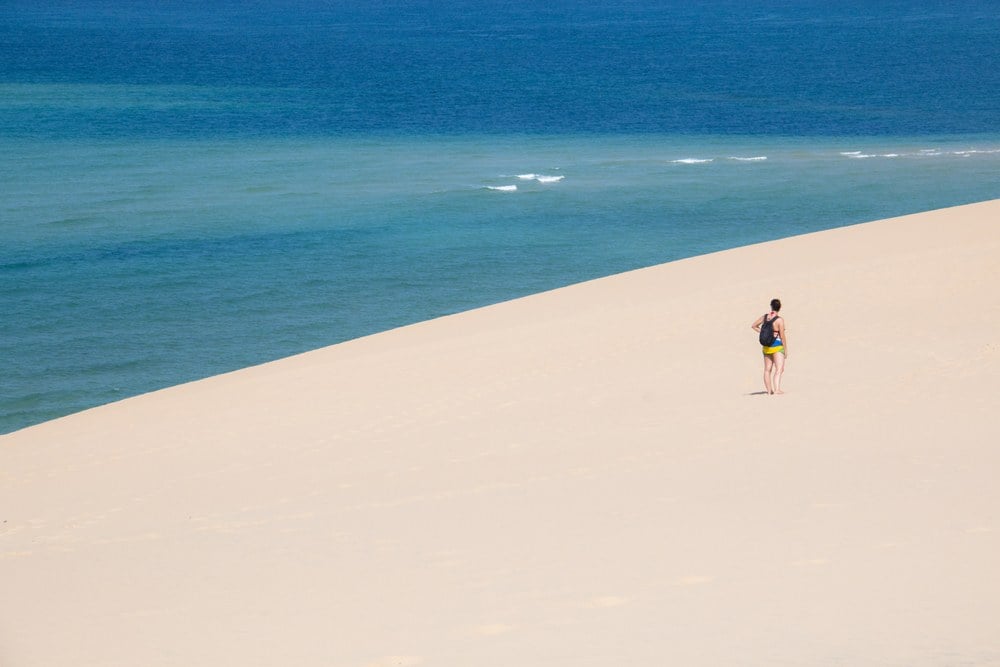
There’s a great sense of community among the Vilanculos locals and often they will organize shows or markets. The local market is still an authentic Africa as ever. Of increasing fame, the local arts organization, Machilla Magic, is also worth checking out. Machilla prides itself on creativity, local work, and sustainability, and buying souvenirs from them feels much more rewarding.
For those who do want to splurge, Vilanculos has plenty to offer. Helicopter rides, big game fishing, and sailing are all possible here.
Nothing is more attractive than staying in the Bazaruto Archipelago. This national park is only accessible to those willing to pay the exorbitant price tag for a resort, which is just dirty. The Bazaruto Islands are absolutely breathtaking, offering some of the best diving and best beaches in Mozambique. Not fuckin’ fair.
Backpacking Ilha de Moçambique
Those who want to go backpacking in Northern Mozambique will most likely start their journey at Ilha de Mocambique. This former Portuguese outpost now turned tourist town is one of the best-preserved sites of its kind and makes for a great 3-day stop.
To arrive at Ilha de Mocambique you must first travel to Nampula, the largest city in the region, by train, bus, or plane. From Nampula, it’s another 3-4 hour drive to Ilha de Mocambique.
From the Nampula airport, you can hire a private car ($30) or catch a local bus ($3) at Avenida de Trabalhadores, which is close to the railway station. If you’re coming from the south by bus, you’ll have to change buses again or hire a private car.
When you arrive at Ilha you’ll have to pay a small fee as the whole island is classified as a heritage site. Upon entering Ilha via the long, singular bridge, you’ll immediately notice the old colonial buildings.
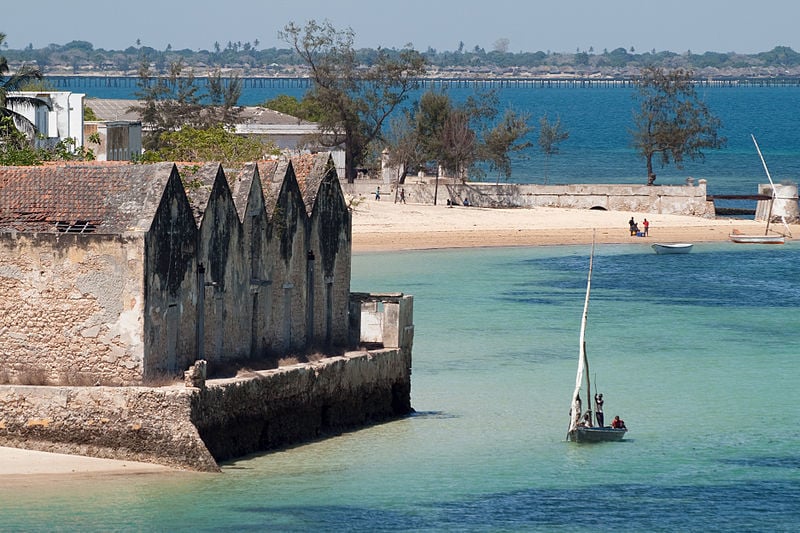
This island was once the primary base from which the Portuguese controlled the territory and as such is heavily fortified. The eponymous fort is a great example of what the island used to look and feel like while the Portuguese reigned here.
Other than visiting the fort, the best thing to do on Ilha is to just wander around and explore the antique passageways. While walking, you may notice there are only a few beaches that look suitable for lounging; most of the shores here are either covered in mangrove or are too craggy.
If you want to see some really great beaches, you’ll have to hire a doha, complete with crew, and set sail. There are some little islands nearby (Goa, Sena, Sete Paus) that have wonderful beaches. Contact Gentio aka Harry Potter for organizing boat trips.
Backpacking Pemba
The next stop in Northern Mozambique is the semi-resort town of Pemba, located on the mainland south of the Quirimbas Archipelago. In addition to being the primary launching point to the Quirimbas, Pemba is a decent little slice of paradise.
Pemba has some excellent beaches that will appeal greatly to those backpacking Mozambique. The grand majority of these beaches, as well as the hotels, are all located to the south of the city. If you’re dropped off on the outskirts of the city – if you took the bus from Ilha this is assured – then it’s best to find a taxi and just get out of dodge.
There are several resorts, guesthouses, and hostels to choose from in the touristy section of southern Pemba. Most if not all of them are located within a five-minute walk of the beach as well.
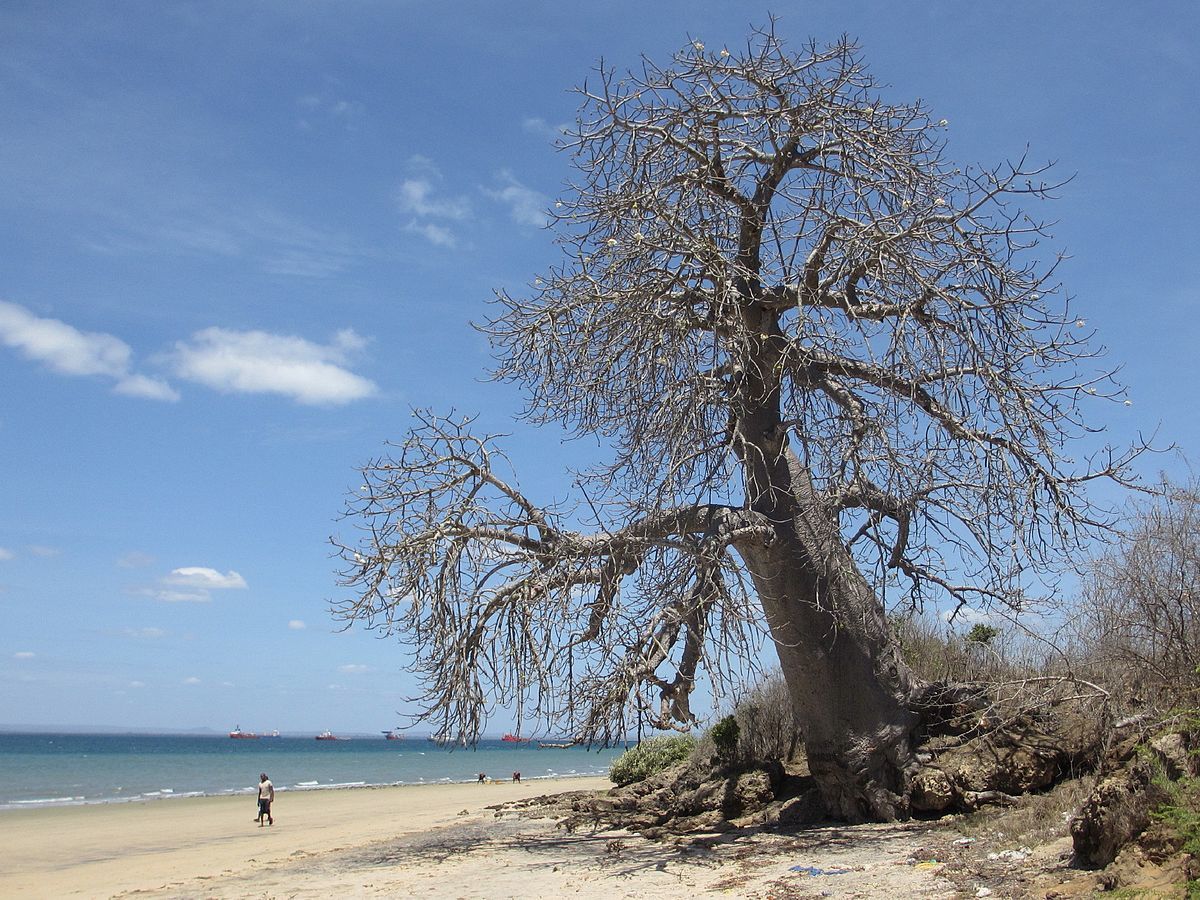
Though getting to the beach from your lodge may be short, the beach itself certainly isn’t. The beach in Pemba goes for quite a ways and you could end up walking for hours from one side to the other.
The shore slopes gently into the sea, so you can walk very, very far out into the ocean without getting your knees wet. Look out for the local fisherman who like to hang in the shallow pools and go about their business of the day.
The town of Pemba itself isn’t much to speak of aside from the fact that the harbor is, in fact, the largest natural one in the world. Other than this interesting tidbit there’s nothing noteworthy about the city. If anything it’s a bit rough and I’d avoid it if at all possible. The streets are chaotic and robberies become frequent here.
Backpacking Ibo Island
The Quirimbas Islands have to be one of if not the most beautiful places in Mozambique. Free from the rampant tourism and Western attention for that matter, the Quirimbas are an untouched paradise.
The largest and most populated island in the Quirimbas Islands is Ibo Island. It is the only island with permanent accommodation and so ends up being the primary base for travelers. From here, your adventure begins!
Ibo is very similar to Ilha de Moçambique in that it is full of Portuguese colonial architecture. Like Ilha, Ibo was also once one of the most important outposts in the empire. There’s another well-preserved fort – Fort of São João Batista – as well as a lighthouse, the latter of which is short hike away.
There’s very little in the way of tourist infrastructure on Ibo, even by African standards. Even eating is a bit of process as you’ll have to let the hotel know ahead of time. If you choose to eat outside of your own hotel, you’ll have to find another hotel/restaurant and then let them know you’re coming to eat that night. Do this before midday or else you may not be eating at all. Don’t just show up somewhere in the evening and expect food as the odds of there being some are very low at this point.
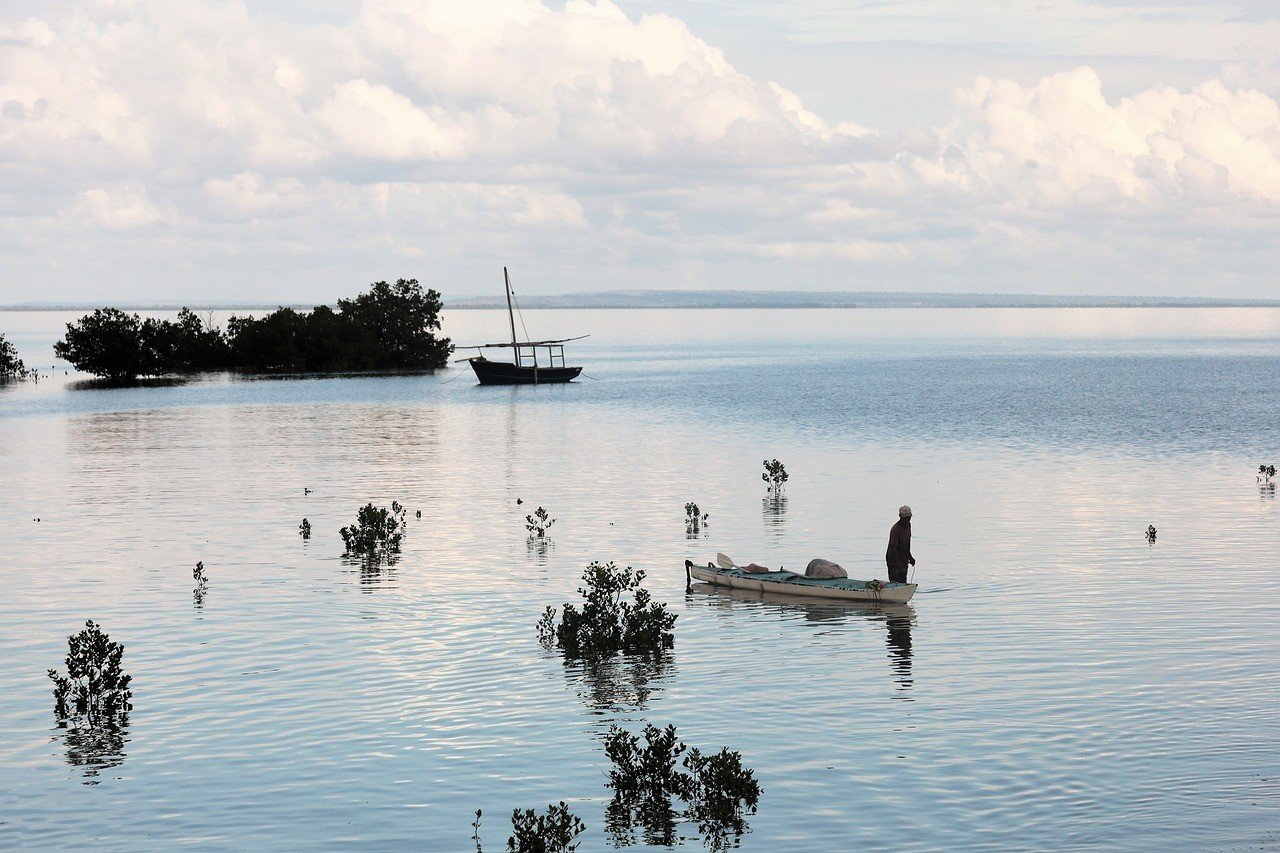
I definitely suggest organizing a dinner at Boabino or Benjamin’s Place while staying on Ibo! Both provide excellent local cuisine and even better company.
There’s another island, eponymously named Quirimba Island, that is very close to Ibo. In fact, the two are actually connected by a strip of earth/mangrove forest that is only accessible at low tide. The walk is, predictably, a bit long and wet sometimes; hiring a guide is recommended. If you do choose to walk, you’ll have to catch a boat back as the tide will have shifted.
Be sure to look out for the German settlement on Quirimba, which has been owned by the Gessner family since the end of WWII. They supposedly have the best meat in the archipelago.
Backpacking the Quirimbas Islands
Besides Ibo and Quirimba, there are 2 more islands that backpackers can access: Matemo and Rolas. You’ll have to sail to visit these islands, which is an amazing experience in itself.
The sea here is hands down the clearest, most beautiful emerald color I’ve ever seen and cutting through the water on a dhow is fuckin’ awesome. To top things off, Matemo and Rolas both have to be two of the most beautiful places in Mozambique.
Note that there are many, many more islands in the Quirimbas (around 30) but several of these, like Medjumbe, Quililea, and Vamizi are privately owned. Unfortunately, access is restricted to daytrippers.
While sailing to Matemo and/or Rolas, you’ll probably make a stop at the Baixo de São Gonçalo, which is a giant sandbar only accessible at low tide. Jump out and play on the mercurial island for an hour or two and then move on.
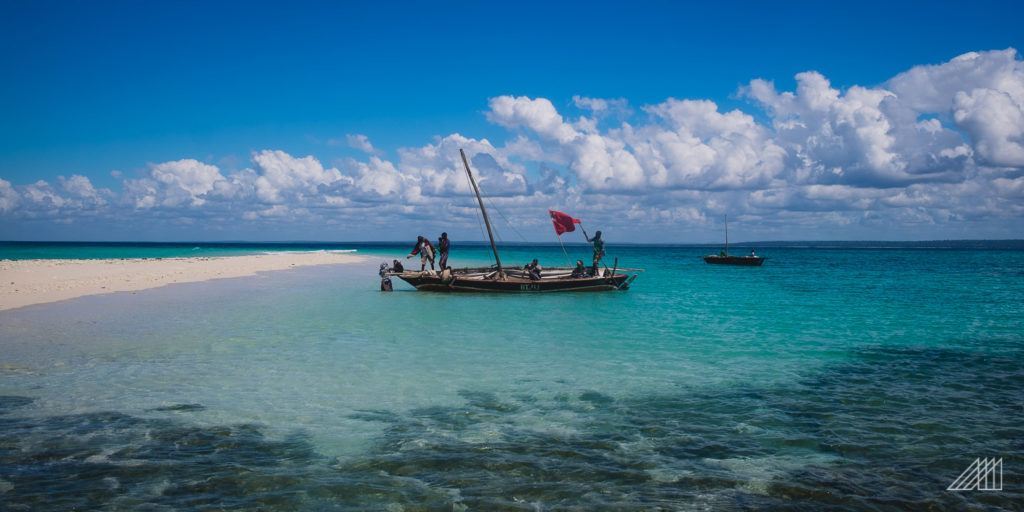
Matemo is the second largest island in the Quirimbas. There was once a popular resort here, but it has since been abandoned and is, except for some curiously necessary private guards, totally empty. Now there are only fishing villages on the island; some of these have campgrounds that serve as the only official tourist accommodation.
Given the size of Matemo, you’ll probably only get to see one section of the island; this is acceptable though as the only side worth visiting is the eastern side. The best beaches are on the eastern side, and several villages can provide support should you need it. One of the camps is located in a village in the northeast corner of the island.
Rolas is the last island and one of the smallest. There’s only one small fishing village here and a beach or two. What beaches Rolas has though are absolutely stunning and these could easily compete for the best beaches in Mozambique.
How to Get to the Quirimbas Islands
Getting to the Quirimbas can be a slightly arduous affair depending on your willingness. There are two methods of transport to the Quirimbas: 1) by local bus and 2) by private car. Either way, you’ll have to reach the docks of Tandanhangue, which are located within the Quirimbas National Park.
By local bus, it’s a bumpy but manageable 4-6 hour trip to Tandanhangue. Having done the journey twice I can only say that’s it’s a very interesting experience. Sometimes you’re not even riding in a bus at all but in the bed of some local’s truck. As you travel you’ll most likely attract the undivided attention of the locals. They don’t see many tourists here and if you’re white you’ll will probably hear people harmlessly shouting mizunga (whitey) a lot.

Taking a private car simply means you may shave an hour or two off your journey and save yourself the attention. Hiring a private car is more expensive ($30).
Upon reaching the docks at Tandanhangue, which last I checked were being expanded, you again have the option of going private or public. Going private means that you’ll have your own boat and again pay more ($30).
If you choose to take the public ferry, you’ll have to pay ($1) to have your bags water taxied to a larger ferry and then pay for the ferry again ($2). Like most forms of public transport in Mozambique, the ferry won’t leave until the vessel is full.
Off The Beaten Path Travel in Mozambique
In a country that is already off the beaten path itself, it can paradoxically be challenging to find destinations that are even more out of the way. Where do you go to get away when you’re already away from most everything else?
The question comes down to what is really worth seeing in Mozambique.
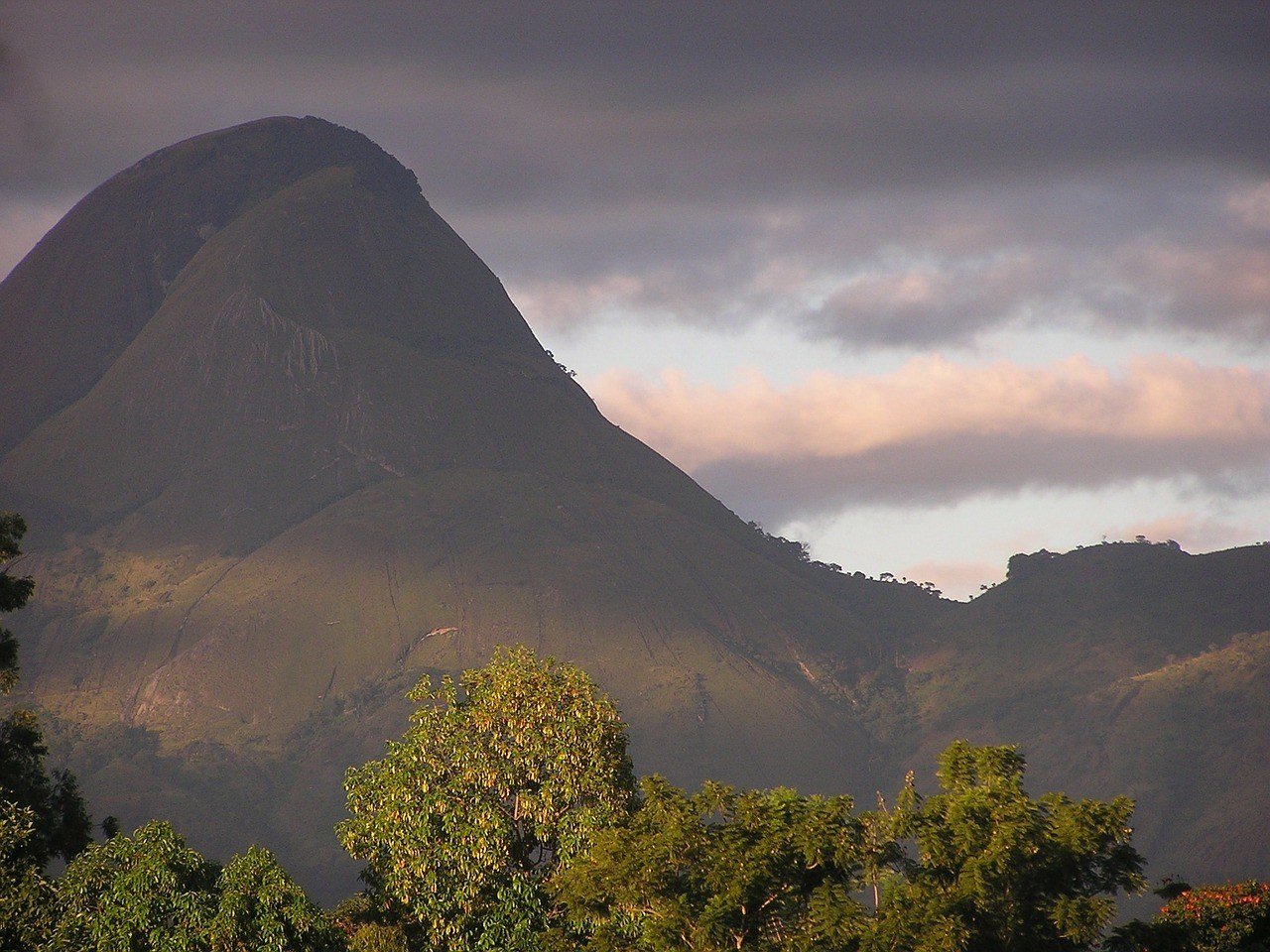
There are definitely some off the grid locations left in Mozambique but they are so underdeveloped that they’re practically inaccessible to those not on an expedition. Places like Mt. Mabu and the “Google Forest” immediately spring to mind. Hopefully, in the near future, these locations will gain protection and become more open to the public.
In the meantime, there is one Mozambican destination in particular that makes for an excellent case study and off-the-beaten-path destination…

We’ve tested countless backpacks over the years, but there’s one that has always been the best and remains the best buy for adventurers: the broke backpacker-approved Osprey Aether and Ariel series.
Want more deetz on why these packs are so damn perfect? Then read our comprehensive review for the inside scoop!
View on Osprey View on REIBackpacking Gorongosa National Park
Gorongosa was once one of the most desirable, most admired, and most beautiful places in Mozambique. At one point it was believed to support the densest population of wildlife in all of Africa and so became the envy of all safari enthusiasts.
But during the Mozambican Civil War, Gongorosa was absolutely thrashed. At one point it was the literal front line for many battles. From 1983-1994, the park was shut down and abandoned. As a result of the violence, local wildlife was either decimated, relocated, or traumatized.
Now that the civil war is over, Gorongosa is beginning to recover. Gorongosa saw increasing support in the 1990s and restoration in the 2000s though that latter bit is subject to some debate.
You can visit Gorongosa on safari now. It’s only camp, Chitengo, is a relatively short drive away from Beira (3-4 hours). Note that you’ll either need a hired car or your own rental to visit the park as there are no buses. 4-wheel drive is mandatory.

When in Gorongosa, you can either go on a self-drive safari along a specific route or join an organized game drive. Look out for all of the usual African suspects like leopards, elephants, lions, hippos, and more.
Even though Gorongosa the park has been revitalized, the local wildlife has not, unfortunately. Many of the older animals remember the traumas of the war and as such are even more anxious than usual around humans.
There are several reports of elephants being aggressive towards visitors and appearing agitated. Be more cautious than usual when going on a safari here.
Top things to do in Mozambique
1. Go diving
Mozambique offers some of the best diving in the whole world! Be sure to organize a dive or even some snorkeling while traveling in this country.

2. Eat piri-piri
Piri-piri is famous for being as delicious as it is spicy. You can order any level of spice when eating piri-piri but be careful – when the cook says it’s spicy, it’s spicy.
3. Set sail
Mozambicans are very comfortable with the sea and have become masters at navigating it. Hire a captain and go on your own sailing trip wherever you see fit. Bazaruto, Quirimbas, and Ilha de Mocambique are all great places to start.

4. Hit the town in Maputo
The economy of Mozambique is growing rapidly and its capital, Maputo, is becoming more cosmopolitan by the day. When staying in this city, be sure to go out and mingle with the locals. You may learn a thing or two and have an awesome night out at the same time.
5. Explore secret beaches
With over 1430 miles of coastline, there’s plenty of beach to visit in Mozambique! See if you can discover the next big seaside destination.
6. Visit Gorongosa
This once superlative turned decimated wildlife refuge is finally starting to recover from the civil war. Animals are slowly returning to their ancestral watering holes and the park is open to tourists again.

7. Go fishing
Whether you’re sitting in a yacht or in a hollowed-out tree, you have to try your hand at fishing while backpacking in Mozambique. There’s nothing quite like the taste of a fresh meal that you caught yourself that day.
8. Explore old Portuguese settlements
Remnants of the Portuguese colonial empire are strewn throughout Mozambique. The ruins found at Ilha de Mocambique, Ibo, and, to some extent, Maputo are well preserved and fascinating to visit.
9. Relax at Tofo Beach
Slow, easy, and gorgeous; Tofo is the model of a perfect beach. Visit Tofo for some amazing diving and even better beach bumming.

10. Work with a non-profit
Though Mozambique has done a great job of pulling itself out of the dregs of war, it could still use some help. There are several organizations that provide all sorts of assistance to Mozambique, from ecological preservation to education to agricultural development.
Try check out other organizations and see if anything interests you.

Wanna know how to pack like a pro? Well for a start you need the right gear….
These are packing cubes for the globetrotters and compression sacks for the real adventurers – these babies are a traveller’s best kept secret. They organise yo’ packing and minimise volume too so you can pack MORE.
Or, y’know… you can stick to just chucking it all in your backpack…
Get Yours Here Read Our ReviewBackpacker Accommodation in Mozambique
Mozambique offers a wide range of backpacker-type accommodations. These range from hostels to bungalows to full on chalets. Most can be booked for a good price. Those who travel to Mozambique should have little problem finding the right lodge for their style and budget.
Conventional hostels are found around Mozambique’s more popular tourist areas in the south of the country. Dormitories are the typical form of lodging in these, though private rooms are also available in many cases.

As you get off the beaten path, hostels start to dwindle and bungalows/chalets become more typical. Many of these lodges still have dormitories though e.g. Magic Lodge in Pemba – they’re just not advertised very well.
When staying on a remote island where few tourists visit, try negotiating room prices with the manager prior to committing; they may be willing to bargain if they have not seen a tourist in a while.
Camping is an option while backpacking through Mozambique and, at times, may be your only option. For example, visiting any of the islands of the Quirimbas Archipelago outside of Ibo Island will definitely require camping. Note that camping is not allowed in the Bazaruto.
Avoid camping in populated areas where crime is more common, as is the rule of thumb for camping in Africa. Instead, stick to designated areas where there is some sort of security.
We at The Broke Backpacker always encourage couchsurfing! It’s a great way to meet the locals and save a buck at the same time.
Where to Stay in Mozambique
| Location | Accommodation | Why Stay Here?! |
|---|---|---|
| Maputo | GuestHouse 1109 | Chill vibes and very helpful staff. There’s a pool and FREE breakfast! |
| Tofo Beach | Turtle Cove Lodge | Very relaxed lodge w/ pool and lots of hammocks. Communal yoga! |
| Vilanculous | Baobab Beach Lodge and Backpackers | Beachfront lodge that is also very close to the central market. Restaurant and bar onsite. |
| Ilha de Mocambique | Casa de Charme | EPIC rooftop, delicious breakfast and top-notch hosts. |
| Pemba | Chuiba Bay Lodge | Boujee vibes. Good food, beautiful lodges, comfortable beds, and beautiful views from the breakfast tables. This lodge is top-tier. |
| Ibo Island | Miti Miwiri | Very nice digs and at a great price. High stone walls and comfortable private rooms. Food and WiFi are ok. |
Costs for Backpacking Mozambique
Mozambique is one of those countries that can be both affordable and expensive at the same time. How much you end up spending while backpacking around Mozambique depends on where you go and what you do.
Staying on the main tourist trail and going to established places will cost you less because deviating from the path and traveling to the far-flung places – especially if you’re alone – will require private transport and sometimes guides.
The average daily costs for traveling in Mozambique will be around $25-$35 USD so long as stick to the main tourist destinations; these include Maputo, Tofo, and, to some extent, Vilanculos. This includes a bed, groceries, transportation, and money for beers or other pleasures.
You can do Mozambique on a tight budget for as low as $10/day but you’ll need most stringent backpacker habits and probably volunteer.
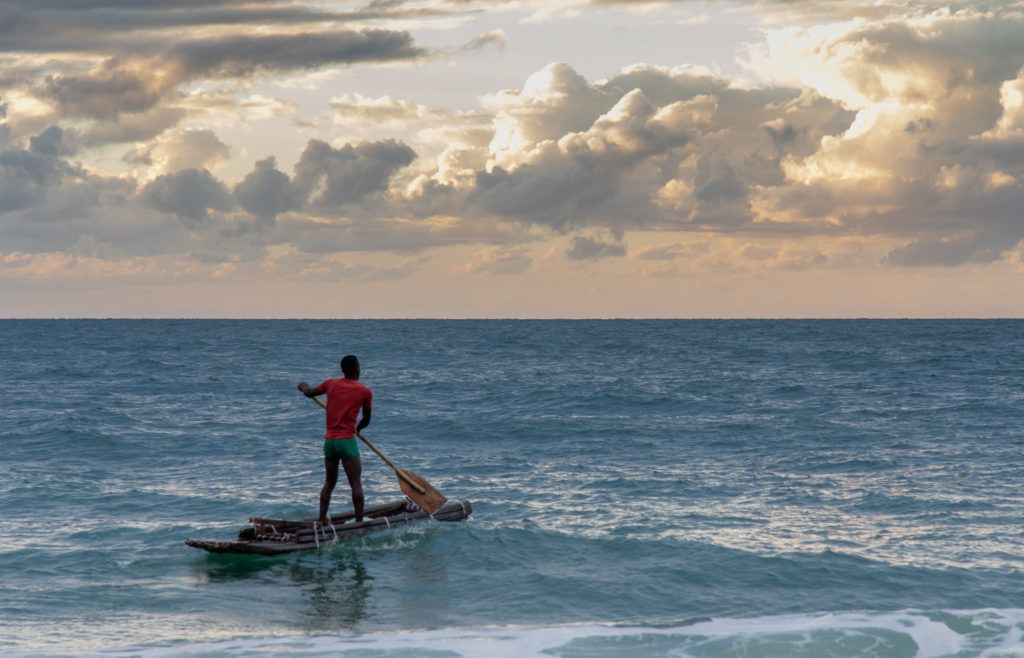
Basic dormitories are available in the popular areas for as low as $5. For around $10-$15, you can get much better digs and maybe even a private bed.
Thankfully, food and local transport are very cheap in Mozambique. A good meal should cost no more than $5 and a really good meal no more than $10-$15. Bus tickets are almost never more than $10, even on the long hauls.
Once you get off the beaten path, the costs of travel become greater and more diverse. In remote places, like the Quirimbas, where there is little to no tourist infrastructure, you’ll have to rely upon more specialized services like private vehicles and resorts; the costs of these are higher than say catching a bus or staying in hostels.
Mozambique is also expensive if you’re traveling alone; you’ll have greater difficulty traveling cheaply as there’s fewer travelers around to split costs with.
Money in Mozambique
The official currency of Mozambique is the metical. Find out how much your money is worth today by using the up-to-date converter below.
ATMs are most commonly found in the larger urban areas of Mozambique. Maputo definitely has its fair share of banks and most airports have an ATM on site as well.
ATMs become less and less common as you travel away from the more inhabited areas of Mozambique. Even relatively popular tourist destinations in Mozambique will have only a handful ATMs available. Really remote locations e.g. the Quirimbas will have maybe one ATM, if one at all, and the former may not even be working.
Before traveling to any off the beaten path places in Mozambique, it’s important that you bring your own cash with you. Be sure to keep it in a safe place deep in your bag or in a money belt.
If you desperately need to withdraw cash and there is no ATM available, you may find success at one of the larger hotels in the area. Essentially, what you’ll be doing is “buying” meticais from them by using their credit card machines.
The hotel management may be very hesitant at first and may even deny to help you outright. If they agree to sell you cash, you’ll almost always have to pay a commission as well.
We also suggest using or selling all of your meticais before leaving Mozambique. Aside from South Africa, these bills have little worth outside of the country and exchanging them will be difficult.
Top Travel Tips for Broke Backpackers
- Camp: There are lots of opportunities to camp in Mozambique! Check out this post for a breakdown of the best tents to take backpacking. If you’re feeling real adventurous and want to save some cash, consider picking up a backpacking hammock.
- Cook your own food: If you are on a tight budget, you can save money by cooking your own food. I recommend bringing a portable backpacking stove.
- Book your transportation early: Both plane and train tickets are much cheaper if you purchase them in advance. This rule does not apply to buses, which you can often book within the day or even hour.
- Couchsurf: Mozambicans are awesome, but I would be cautious if you are a woman traveling alone. Check for reviews. That being said, Couchsurfing to make some real friendships and see this country from the perspective of locals.
- Pack a travel water bottle and save money every day!
Why You Should Travel to Mozambique with a Water Bottle
Plastic washes up on even the most pristine beaches… so do your part and keep the Big Blue beautiful
You aren’t going to save the world overnight, but you might as well be part of the solution and not the problem. When you travel to some of the world’s most remote places, you come to realise the full extent of the plastic problem. And I hope you become more inspired to continue being a responsible traveller.
Plus, now you won’t be buying overpriced bottles of water from the supermarkets either! Travel with a filtered water bottle instead and never waste a cent nor a turtle’s life again.

Drink water from ANYWHERE. The Grayl Geopress is the worlds leading filtered water bottle protecting you from all manner of waterborne nasties.
Single-use plastic bottles are a MASSIVE threat to marine life. Be a part of the solution and travel with a filter water bottle. Save money and the environment!
We’ve tested the Geopress rigorously from the icy heights of Pakistan to the tropical jungles of Bali, and can confirm: it’s the best water bottle you’ll ever buy!
View on REI Read the ReviewBest Time to Travel to Mozambique
Mozambique is subject to a typical tropical climate and only has two distinct seasons: a wet season and a dry season. The wet season in Mozambique runs from December-March and the dry season is April-November.
Mozambique receives the majority of its rainfall during wet season. This precipitation usually comes in the form of afternoon storms so those backpacking in Mozambique during this time should still have fair morning weather.
In the grand scheme of things, Mozambique receives relatively moderate rainfall – even during the rainy season – when compared to other tropical nations.
Note also that the wet season is also Mozambique’s hot season. Temperatures can exceed 100-degree Fahrenheit during this time and feel even hotter with the increased humidity.

The dry season is generally the best time to visit Mozambique. From April-November, rain is sporadic, temperatures are pleasant, and washouts are less common. In the dead of winter (June-August), nights can be cold, so be sure to pack a long sleeve.
Something to note is that oceanic algae is more or less present during certain times of the year. When I was in the Quirimbas in May, it was rampant and covered the beaches particularly on any eastern shore.
I asked if it was like that year round and many of the locals said it was only during certain parts of the year. I couldn’t find much more about this phenomenon on the internet so if anyone has any insights, please comment at the end of the article.
Festivals in Mozambique
Civil War be damned! Nothing’s gonna keep these Mozambicans from preserving and celebrating their culture!
There is a considerable lack of festivals in Mozambique, for one reason or another, but the ones that do occur are a great time. Most festivals are cultural or musical in nature. Attending one would definitely be time well spent while backpacking in Mozambique.
- Gwaza Muthini (February) – Celebrates the resistance against colonial rule. Celebrated with food and dance. Held in Marracuene.
- STRAB (May) – The Subterranean Rhythm and Blues Festival. Growing rock and jazz festival that is very popular with South Africans. Held at Ponta Malongane.
- AZGO (May) – International arts festival that features live performances and art shows from artists around the world. Azgo is old local slang meaning “let’s go!” Held in Maputo.
- Independence Day (June 25th) – One of the biggest celebrations in Mozambique. Lots of outdoor performances, dancing, and even an appearance by the president. Held in Maputo.
- Put Foot Rally (June-July) – Great African rally that challenges drivers to navigate across 6 different countries. Ends in Mozambique.
- CHOPI (July-August) – Festival that features more traditional styles of music. Held in Quissico
- TAMBO (July) – Arts festival in the Northern reaches of Mozambique. Seven days long. Held in Pemba.
- FORR (September) – The Fellowship of Rock and Roll. Similar to the STRAB festival including the South African presence. Held in Ponta Malongane.
What to Pack for Mozambique
On every adventure, there are six things I never go traveling without:

Travel Security Belt
This is a regular looking belt with a concealed pocket on the inside – you can hide up to twenty notes inside and wear it through airport scanners without it setting them off.
Microfiber Towel
Hostel towels are scummy and take forever to dry. Microfibre towels dry quickly, are compact, lightweight, and can be used as a blanket or yoga mat if need be.

Petzl Actik Core Headlamp
A decent head torch could save your life. If you want to explore caves, unlit temples, or simply find your way to the bathroom during a blackout, a headtorch is a must.
‘Monopoly Deal’
Forget about Poker! Monopoly Deal is the single best travel card game that we have ever played. Works with 2-5 players and guarantees happy days.
Hanging Laundry Bag
Trust us, this is an absolute game changer. Super compact, a hanging mesh laundry bag stops your dirty clothes from stinking, you don’t know how much you need one of these… so just get it, thank us later.
For plenty more inspiration on what to pack, check out my full backpacking packing list.
Safety in Mozambique
During the 1980s Mozambique was engulfed in civil war and, as a result, tourism suffered. Though tempers still flare sometimes, the internal conflict is now over and peace has returned. National security is only improving and reports of rebel insurgency are very infrequent.
In short: Mozambique is much safer than it used to be. Security is now at a point where we are comfortable to recommend safe travel in Mozambique. Granted, there are still the usual cautions of travel to consider in addition to a few other unique conditions.
The central provinces of Manica, Sofala, Tete, and Zambezia experienced the most strife during the civil war and even these days problems arise. Rebel splinter groups have been known to pop-up and attack vehicles. If one such group arises and causes problems, local military may begin to form armed convoys to escort traffic. Instances like this are still very rare so I wouldn’t worry too much.
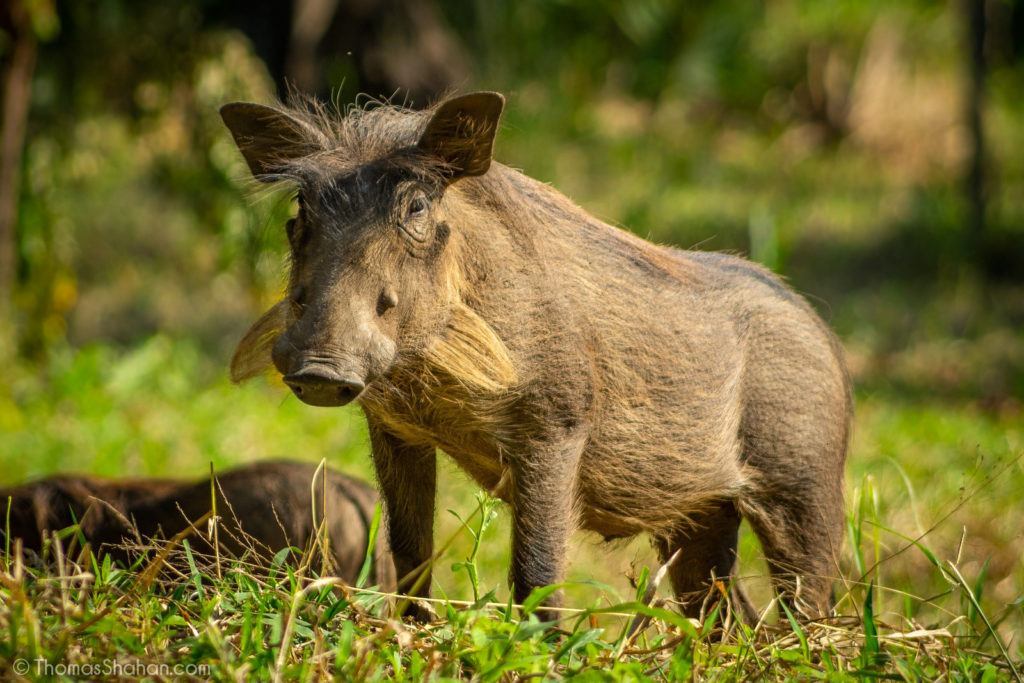
Petty crime, though not as common as in South Africa, is still apparent. Be sure to practice all of the usual cautionary habits that come with travel. Avoid displaying expensive objects or leaving them unattended. You can read our article here for more information on staying safe when you travel in Mozambique.
Malaria is present in Mozambique. Concerned parties should consult their doctors prior to arriving in Mozambique or reach out to a local doctor if they’ve been backpacking in Mozambique already. Note that purchasing malaria medication in Mozambique will be much cheaper than doing so in a Western nation, but you want to go to a doctor you trust.
Police in Mozambique
Ironically, the one party that you’ll have to be most vigilant of is the cops as they’re more crooked than the crooks! Bribes are extremely common in Mozambique and nearly everyone has to pay some sort of law enforcement on a daily basis.
Some cops may end up targeting backpackers for a bribe. They’ll stop you and make unwarranted requests – usually, they’ll ask to see your passport – and then make up some sort of citation off the top of their head, at which point you’ll have to pay them.
The best way to get out of these situations is to just be prepared. Always have your passport on you, know where the visa is, and know the nature of your stay in Mozambique. If the cops claim that you’ve broken the law in some way and this seems unreasonable then it probably is. Just explain to them clearly and sternly that you’re doing nothing wrong and eventually they’ll get bored and let you go.
Sex, Drugs, and Rock ‘n’ Roll in Mozambique
Maputo’s nightlife is quickly becoming one of the hottest places to party in Africa! Every day new and more extravagant bars and clubs are opening up. These appear to be straight out of a big European city, like Lisbon or Paris, further adding to Maputo’s increasingly cosmopolitan vibe.
Art galleries, cafes, boutiques, and a lot of local businesses are opening up here too. There’s something for everyone these days in Maputo and this trend doesn’t appear to be slowing down anytime soon.
Please be mindful of STDs when going home with someone in Mozambique. HIV/AIDS is still a huge issue in Africa (Mozambique is no exception) and frequency rates are as high as 10%. Please practice safe sex at all times.
Some of Maputo’s top bars and clubs:
- Coconuts Live – One of the most extravagant clubs in Maputo. Busy and expensive. Only happening after midnight.
- Africa Bar – Very upscale club w/ very lavishly dressed locals. Live jazz on Thursday.
- Mundos – More laidback space that is appropriate for all sorts of people. Lots of pizza and beer.
- Sinatra’s – Late-night spot featuring Afro-Brazilian beats.
- T3 – Local spot that in the more rugged suburbs. Burning barrels, dusty roads, real Africa.
Travel Insurance for Mozambique
Traveling without insurance would be risky so do consider getting good backpacker insurance sorted before you head off on an adventure.
ALWAYS sort out your backpacker insurance before your trip. There’s plenty to choose from in that department, but a good place to start is Safety Wing.
They offer month-to-month payments, no lock-in contracts, and require absolutely no itineraries: that’s the exact kind of insurance long-term travellers and digital nomads need.
SafetyWing is cheap, easy, and admin-free: just sign up lickety-split so you can get back to it!
Click the button below to learn more about SafetyWing’s setup or read our insider review for the full tasty scoop.
Getting Into Mozambique
Mozambique is relatively well connected internationally and there are several ways to get into the country.
Most international flights will arrive in Mozambique via Maputo International Airport. From there, connections can be made to other domestic airports. From Maputo Airport, the best way to reach the city is by taxi, which should cost between $15-$20 USD.
There are several other international airports in the country but they have limited international flights.

There are several buses that run between Mozambique and neighboring countries. Crossing into Mozambique by land is a relatively straightforward affair (by African standards) and doing so shouldn’t be a dangerous or hostile situation. For more on borders, see the Onwards Travel section for more details.
Most people travel to Mozambique after wrapping up their backpacking trips in South Africa or Malawi. Again, tourists and citizens alike use these borders very often so there shouldn’t be too many problems. You will have to get on and off the bus several times though to clear both sets of customs.
Entering Mozambique by sea is currently not possible. Many captains will tout that they can sail you back and forth from Tanzania but this will take a good ship and dedicated crew, all of which will cost a pretty penny.
Entry requirements for Mozambique
Like much African beuracracy, customs processes in Mozambique is a bit of a mystery – they behave in a certain way one day and then completely change the next.
In the recent past, acquiring a visa in Mozambique was a bit of a confusing process, not because it was overly complicated but because you weren’t given much instruction. Thankfully, the process for acquiring a Mozambican visa has improved and there is, at last, some consensus on how to do so.
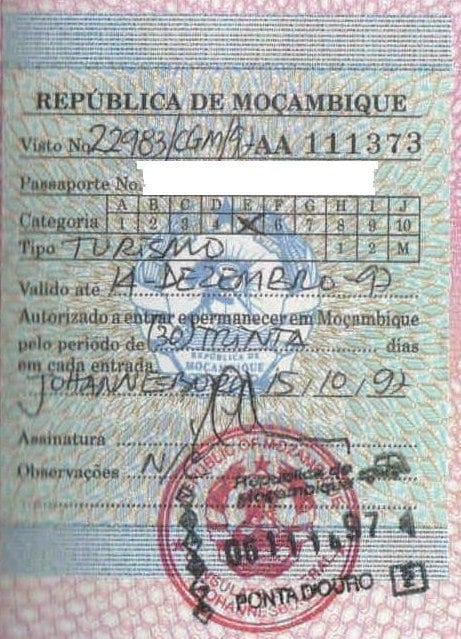
All foreign nationals except those from Swaziland, South Africa, Tanzania, Botswana, Malawi, Mauritius, Zambia, and Zimbabwe have to acquire a visa before visiting Mozambique. A tourist visa lasts 30 days, is valid for 90 days after acquisition, and cannot be extended. Note that you will need proof of a yellow fever vaccination to travel to Mozambique.
The surest way to get a visa for Mozambique is to apply at a local embassy. Many embassies will be able to grant a visa in a single day, which ones exactly I cannot say. Whether a consulate can do so in a day is a matter of time and motivation. Prices these will also vary but should remain around $50 USD.
Mozambique offers visas-upon-arrival at several of its ports of entry now, which is a new and positive development. A visa-upon-arrival is most commonly issued at the country’s busiest airports. These include Beira, Nampula, Maputo, Pemba, Tete, and Vilanculos.
Acquiring a visa-upon-arrival at a land crossing is still a bit hazy; some do it and some don’t. If you’re planning on crossing into Mozambique via a border, especially a remote one, then be sure to check and see if they issue Mozambican visas-upon-arrival beforehand.

Get 15% OFF when you book through our link — and support the site you love so dearly 😉
Booking.com is quickly becoming our go-to for accommodation. From cheap hostels to stylish homestays and nice hotels, they’ve got it all!
View on Booking.comHow to Travel in Mozambique
Mozambique has all the usual transportation options that a modern country has. Between the many bus routes, private shuttles, domestic airlines, and more, those backpacking Mozambique should have plenty of options for getting around.
Buses are the most ubiquitous form of transport in Mozambique. They are a convenient means of getting around so long as you stay within a certain area. Getting to and from Maputo-Tofo-Bazaruto or Ilha de Mocambique-Pemba shouldn’t be a hassle.
However, getting from one end of the country to other via a bus could be a huge and maybe tedious affair. Travel times between Beira and Nampula could easily take 24 hours.
If you intend to visit northern Mozambique or any other far-flung region that isn’t around Maputo, flying may be your best option. Though the prices are higher than taking the bus, the convenience of doing so more than justifies the pricetag.

When you travel to Mozambique’s more remote regions, you’ll inevitably have to resort to a private taxi. As is the case with most private forms of transport, prices will be higher so try and find a group to travel with. Taxi drivers will often pick up locals while driving you to make an extra buck anyway.
Another local form of public transport includes chapas, which are essentially vans or even trucks that are packed with people like tuna cans. These often serve to transport people shorter distances and will only leave once full. Public ferries are found around the archipelagos and behave in the same way.
There is a train network in Mozambique, but it is solely limited to a Nampula-Cuamba line running east-west to Malawi.
Hitchhiking in Mozambique
Hitchhiking is very common in Africa and many locals use it as their primary means of getting around. Most drivers are so used to picking up hitchhikers that they end up becoming unofficial taxi drivers!
For these reasons, those backpacking in Mozambique should have little trouble finding a cheap ride.
Hitchhiking, or bolea as it is referred to by Mozambicans, follows all of the usual hitchhiking rules of the sport albeit with a few cultural differences. Sticking out your thumb is not really recognized in Mozambique. Instead, point your finger to the ground to indicate that you need a ride. If you continue moving your finger move up towards the distance, this means that you need to go a long way.
Upon being picked up, make sure that the driver knows where you’re going and if you’re willing to donate any cash. Many drivers will be obligatory and not ask for anything. Knowing a little Portuguese for this part really pays off.
Also, note that the driver is going to be stopped by the police a lot, as is usual. Bribes will be solicited and arguments will occur but this would’ve happened regardless of your presence; this is just the usual Mozambican traffic drama.
Onwards travel from Mozambique
Mozambique is a large country and shares borders with 6 other neighboring ones: South Africa, Swaziland, Malawi, Zimbabwe, Zambia, and Tanzania.
Mozambique has friendly relations with the majority of its neighbors and so most of its borders are open to tourists and locals alike. Only in certain hostile situations are borders closed.

Be very aware of entry requirements for each individual country that you intend to enter. Some offer visas upon arrival while others require you to obtain one before.
Below is a table outlining Mozambique’s border crossings. Included are the number of crossings followed by the most popular option for each country.
| Country | Border Crossings | Most Popular |
|---|---|---|
| South Africa | 4 | Lebombo |
| Swaziland | 2 | Goba |
| Zimbabwe | 2 | Machipanda – Mutare |
| Zambia | 1 | Cassacatiza – Chimefusa |
| Malawi | 4+ | Zobue – Mwanza |
| Tanzania | 2 | Both Negomane and Namoto are difficult because they require a river crossing. |
Staying Connected in Mozambique
For those needing constant internet connection, Mozambique is going to be frustrating. Though WiFi and data are plentiful in Maputo, they are sorely lacking in the rest of the country. Remote locations will have practically no internet at all save for a few hotels that need it to function.
To maximize your connectivity you can purchase a local SIM card, which will give you access to local data networks. Again, these networks are great in Maputo but suffer outside of it. Don’t expect a reliable connection while backpacking anywhere in Mozambique, really.
There’s not much you can do about the connectivity situation in Mozambique so my best advice is to just forget about it and unplug for a while. You’ll find you never really needed internet in the first place.

A new country, a new contract, a new piece of plastic – booooring. Instead, buy an eSIM!
Jetpac eSIMs work just like an app: you download it, pick your plan, and BOOM! You’re connected the minute you land. It’s that easy.
Read about how e-Sims work or click below to see one of the top eSIM providers on the market and ditch the plastic.
Grab an eSIM!Volunteering in Mozambique
Volunteering abroad is an amazing way to experience a culture whilst helping your host community. There are plenty of different volunteer projects in Mozambique including teaching, construction, agriculture and pretty much anything.
Mozambique doesn’t offer as many volunteer positions as other countries in Africa, but there are still opportunities out there. Most projects are in agriculture and permaculture, where you’ll have the opportunity to help out with various eco-projects. Volunteers in hospitality are also regularly required. Keep in mind that every traveler wishing to volunteer in Mozambique needs to obtain a visa before arrival.
Our go-to platform for finding volunteering gigs is Worldpackers who connect travellers with host projects. Have a look at the Worldpackers site and see if they have any exciting opportunities in Mozambique before signing up.
Alternatively, Workaway is another excellent common platform used by travellers searching for volunteering opportunities. You can read our review of Workaway for more info on using this terrific platform.
Volunteer programs run through reputable work exchange programs like Worldpackers and platforms like Workaway are usually very well-managed and reputable. However, whenever you are volunteering do stay vigilant, especially when working with animals or children.

Worldpackers: connecting travellers with meaningful travel experiences.
What to Eat in Mozambique
Those who have been backpacking in Southern Africa for a while and are sick of the bland bush food should be very happy in Mozambique! Thanks to the strong Portuguese influence, Mozambique has some of the best and most exciting food in the region. Spices are used liberally, produce is fresh, and the seafood is amazing.
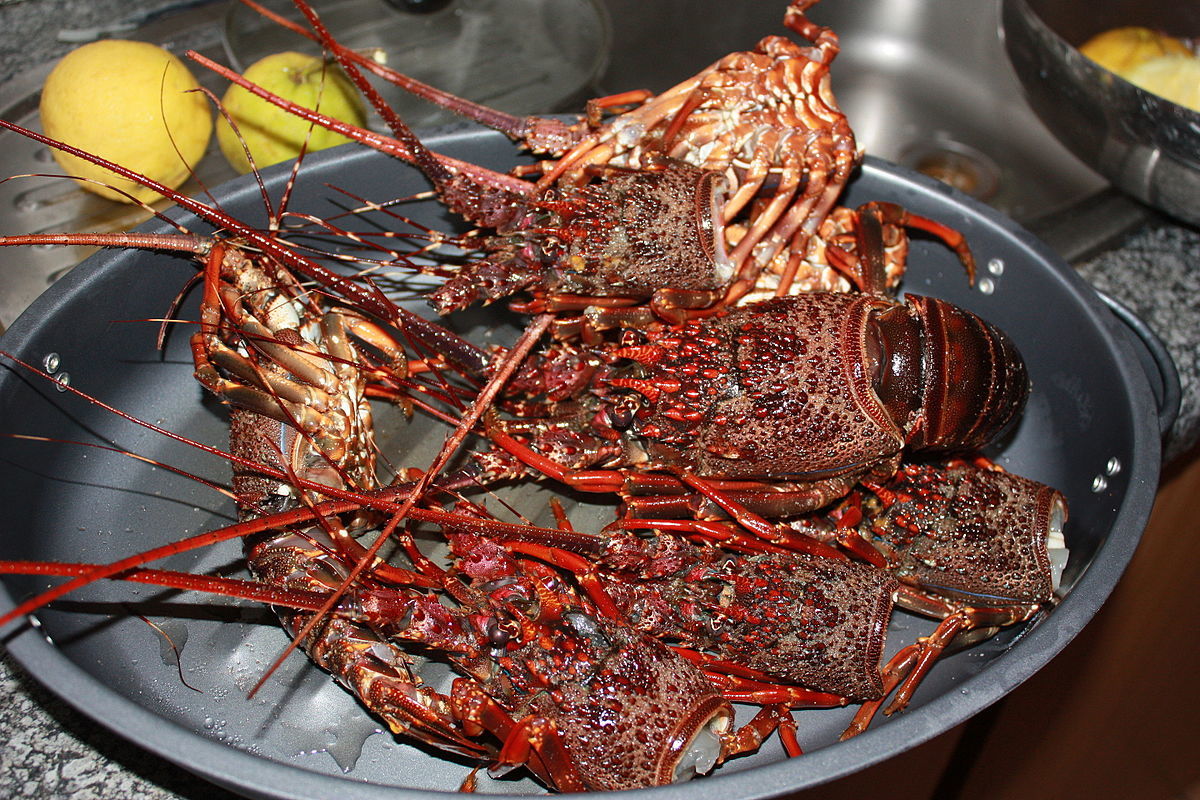
Like all African countries, the keystone of Mozambican cuisine is a hearty filler, in this case, ncima. Ncima is a thick porridge made from cornmeal that can be likened to South African pap or ugali. You see more of this further inland in addition to other African staples like cassava. On the coast, seafood is almost always featured in any sort of dish.
List of the 10 best Mozambican dishes for you try out:
- Ncima – cornmeal porridge
- Piri-piri – spicy grilled meat (usually chicken)
- Matapa – stew of coconut, cassava, peanuts, and garlic
- Chamussa – fried pastries like samosas
- Dobrada – stew of tripe, beans, and sausage
- Prego Roll – piri-piri sandwich
- Bolo Polana – mashed potatoes and cashews w/ vanilla and citrus
- Rissois de camarão – shrimp croquettes
- Prawns and crayfish
- Cashews
Mozambique Culture
I found interacting with Mozambicans to be a huge breath of fresh air. Unlike South Africans, who are relatively spoiled by their country’s prosperity, or Namibians, who are somewhat reserved, Mozambican people are a very enthusiastic and grateful bunch. Having just escaped a terrible civil war, Mozambicans are very thankful to be alive and want to enjoy it as much as possible.
I would say that Mozambicans are a somewhat open-minded people, which may or may not be an aftereffect of their colonial history. If the capital of Maputo is any indicator, then Mozambicans are very excited about becoming a part of the modern world.
That is not to say that they are ready to totally abandon their heritage. Mozambican culture, which is an amalgamation of dozens of tribes, is celebrated daily and held in great reverence. Each one is unique and each one is very proud of where they come from.

Mozambicans are naturally very curious, particularly towards Westerners who had all but disappeared from the country during the civil war. While traveling in the more remote parts of the country, you will be stared at, a lot.
Just remember that those starring are more flabbergasted than filled with ill-intention and that most people just want to know your name. Give them a wave and say hello. If you’re worried about being robbed, which is normal, then refer to our Safety in Mozambique section for a brief reassurance.
Like many Bantu cultures, Mozambicans believe very strongly in animism. In Mozambique, everything has a spirit and these can interact both with each other and with the corporeal world. It’s not uncommon to hear about curses or even spiritual possessions while backpacking Mozambique. At the moment, gamba spirits – those of dead soldiers – are currently spoken about often.
Mozambique Travel Phrases
Mozambique is a former Portuguese colony and still speaks the language Portuguese greatly to this day. Although many other African tribal languages are spoken in Mozambique, Portuguese is the only official language of the country.
Mozambican Portuguese is very different from European and Brazilian Portuguese. You’ll often hear a lot of indigenous words mixed into conversations so much so that it can feel like the whole conversation has switched over to a different language.
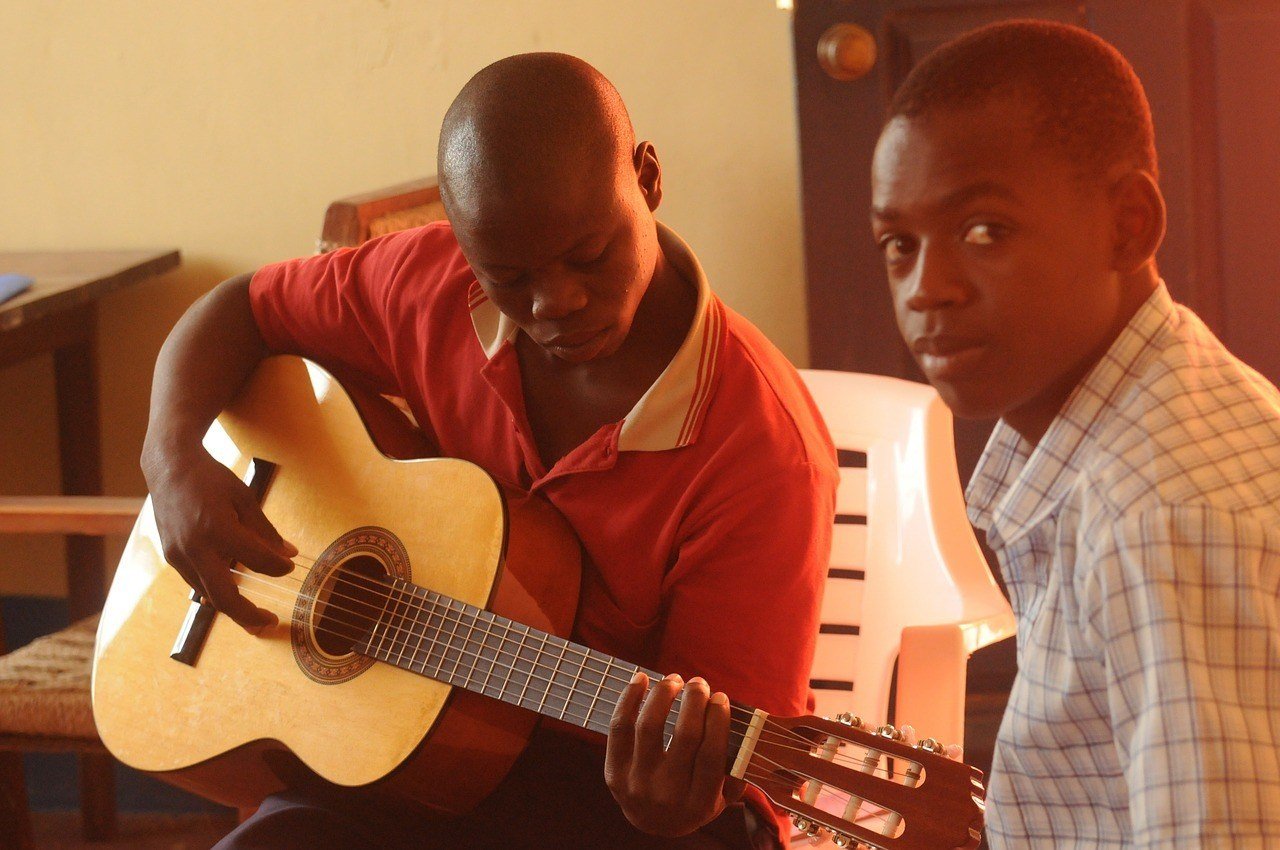
If you bare with the locals and try to understand what they’re saying, you’ll get by just fine. If you speak Portuguese to them, they’ll definitely understand you as well.
English is uncommon outside of Maputo and the popular southern beaches. You can get by on just English in these places, but move north and you’ll definitely need to know some Portuguese. Spanish may help a little as well as the locals can often understand it.
Below is a list of 10 helpful Portuguese phrases that will help you on your holiday in Mozambique.
- Bom dia/boa tarde/boa noite – Good morning/afternoon/night
- Tudo bem? – All good?
- Meu nome é… – My name is…
- Onde fica a praia? – Where is the beach?
- (O)brigado/(O)brigada** – Thank you
- Até logo – see you later
- Que saudades! – It’s been so long (since I’ve seen you)!
- Sem saco de plástico – No plastic bag
- Nenhuma palha por favor – No straw please
- Sem talheres de plástico por favor – No plastic cutlery
- Você fala inglês? – Do you speak English?
- Quanto custa? – How much?
- Mais um! – Another!
**Obrigado changes depending on the gender of the speaker. Men say obrigado. Women say obrigada.
Books to Read while Traveling Mozambique
These are some of my favorite travel reads and books set in Mozambique, which you should consider picking up before you begin your backpacking adventure…
- Ualalapi: Fragments from the End of Empire – One of the 100 best African novels of the 20th century. Readdresses the story of Ngungunhane, the last ruler of the Gaza Empire, and his role as a modern-day icon.
- The First Wife: Tales of Polygamy – A woman finds out that her husband is involved with several other women. After he is forced to marry all of them, the women band together to fight for their rights.
- Sleepwalking Land – First novel by Mia Couto. A young boy and old man take shelter in an abandoned bus while the Mozambican Civil War rages outside. Inside the bus, their story, as well as the story of others, unfolds.
- The Last Flight of the Flamingo – In this other novel by Mia Couto that explores the Mozambican Civil War, Mozambican soldiers and UN agents become the victims of mysterious explosions.
- We Killed Mangy Dog – A collection of short stories from Mozambique.
- A Complicated War – A look into the events that lead Mozambique into a civil war and how it fell from grace.
Brief History of Mozambique
Mozambique has a long and fateful history, the tragedy of which is not unknown to an African nation. For much of its existence, Mozambique was home to nomadic Bantu people who frequently migrated to follow game.
They lived in relative anonymity for much of their existence and only encountered the occasional Arab trader from time to time. Arab trading posts were common along the coastline in Mozambique and, though they were governed by the various sultanates, their power didn’t reach far into the mainland.
When Vasco da Gama sailed around the Cape in 1498, everything changed. Vasco’s journey marked the entry of the Portuguese Empire into African geopolitics and we all know how that ended up.
The Portuguese quickly snatched up land in Mozambique, divided it into parcels or prazos, and kicked out the former Arab traders. For years following, the Portuguese would fight with the former sultanates and occasional tribal leader for control of the region.
Though the Portuguese never had total control over Mozambique, their presence was dominant and defined by repression and neglect.
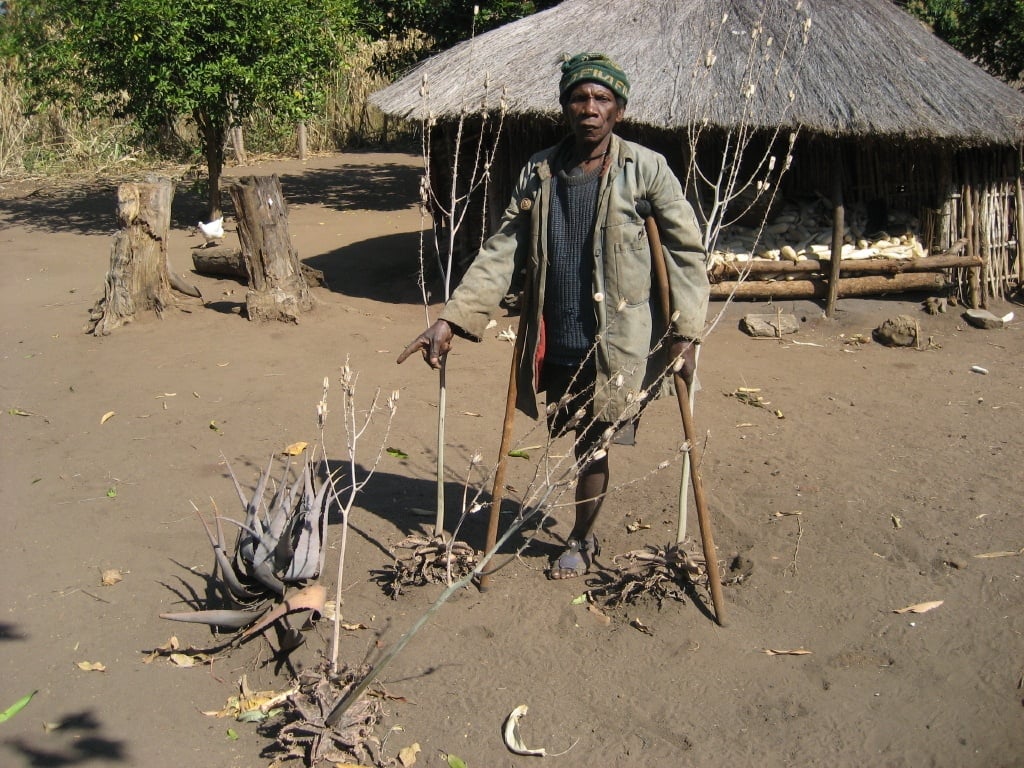
In the mid-20th century, Mozambique began to fight back for its independence. Guerrilla warfare was an effective means of combating the colonial power. By 1973, the paramilitary group FRELIMO had harried the Portuguese enough to cause the former empire to withdraw all of its people.
With the Portuguese gone, FRELIMO became the dominant political party in Mozambique but rivals quickly emerged. The most significant competitor was RENAMO and conflict with this group would eventually lead Mozambique to all-out civil war. Backed by various international entities that opposed FRELIMO’s socialist ideals, RENAMO was an able-bodied group.
From 1977-1992, Mozambique was caught in civil war. In 1994, the first democratic election was held, which would pave the way for peace. FRELIMO won the elections, RENAMO stymied for the next decade, and things began to look up for Mozambique.
Mozambique is now one of the most hopeful nations in Africa. It has a wealth of resources, fertile lands, and a tourism sector that could potentially be huge. Much foreign attention is paid to Mozambique at the moment and, hopefully, the nation will develop even further in the near future.
Unmissable Adventures in Mozambique

Things go wrong on the road ALL THE TIME. Be prepared for what life throws at you.
Buy an AMK Travel Medical Kit before you head out on your next adventure – don’t be daft!
Buy on REIDiving in Mozambique
Mozambique is Mecca for divers! Here is some of the best diving on the planet featuring some of the most desirable dive porn that there is: brightly colored coral reefs, huge megafauna, rare marine life, and crystal clear water. For anyone who likes to get their flippers wet, Mozambique is a must visit.
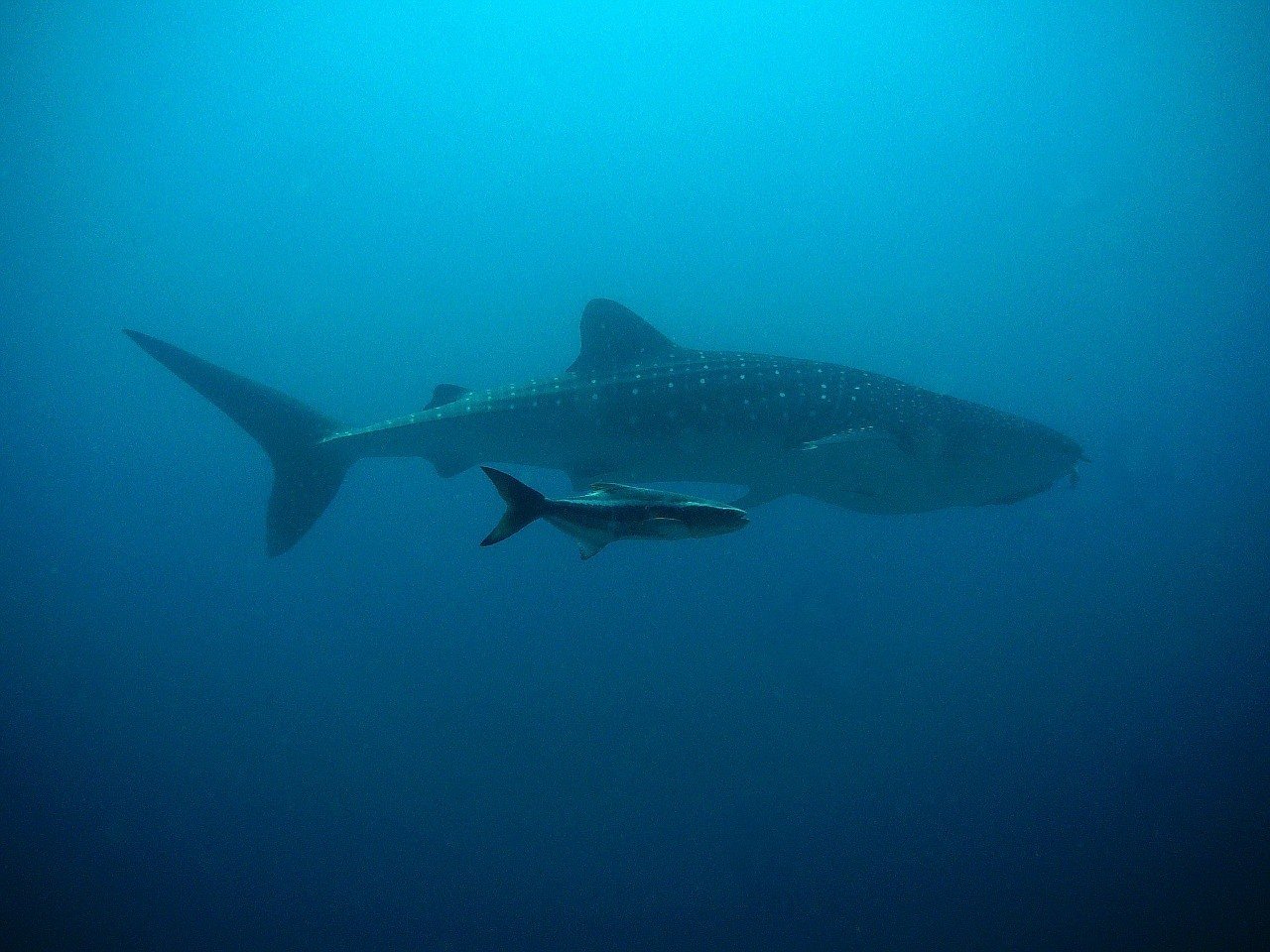
Mozambique benefits from a stable climate, warm waters, and a favorable geographic position. Stationed at the tail-end of the Agulhas Current, which is one of the greatest migratory corridors in the world, Mozambique receives its fair share of schools and predators looking for a meal.
Best dive sites in Mozambique:
- Quirimbas Archipelago – Village diving w/ lots of potential. Big fish like reef sharks, Spanish mackerel, and several rays. Popular sites include Lauras Leap and Rocha Rock. Will have to be organized in Pemba or Ibo Island.
- Pemba – Excellent diving in the Bay of Pemba. Most impressive is The Gap – a wall that drops from 15 meters to over 100. Worthwhile sites also include the Farol Ledge, Penguin Shoal, and the Playground.
- Bazaruto Archipelago – The best place to dive in Mozambique and arguably one of the most amazing in the world. Features humpback whales, dugongs, whale sharks, and a rainbow of coral and school fish. Very expensive and exclusive though.
- Tofo/Barra – Some of the most accessible and impressive diving in Mozambique. Hugely varied in difficulty and marine life. Sites include the Salon, the Office, and Manta Reef, which is one of the best places in the world to see manta rays.
- Ponta do Ouro – Newer dive site near the South African border. Features lots of diverse reefs and marine life including potato cod, shark, turtles, dolphin, and sometimes even hammerhead sharks. The Doodles and Pinnacles are two of the most famous sites here.
Sailing in Mozambique
While backpacking in Mozambique, you will often see the locals tending to or sailing on their dhows (sailboats) for work or pleasure. These dhows can range in character from huge, modern beasts made from fiberglass and steel to a simple sailboat with a keel made from a hollowed out tree and old t-shirts for a sail.
Watching or sailing on a dhow can be a bit of a spiritual experience as it’s really special to watch a captain guide his vessel like it was a part of their own body. I highly, highly recommend hiring a captain and going sailing in Mozambique while you’re traveling there.
The best way to find a captain is to ask your hotel management or visit the local docks. Some people may approach you directly but it’s more likely that you’ll have to organize things yourself.

When hiring a captain, most will have a preset itinerary in mind. There is usually some flexibility, and depending on what you want to do e.g. dive, fish, etc. you can change the itinerary around a bit.
Prices vary greatly when it comes to sailing in Mozambique. Obviously, newer, more decked-out vessels will cost more, but they should be able to accommodate more people who can split costs.
The more traditional wooden dhows will only be able to hold smaller groups (2-6 people depending on boat size) and will generally be less expensive. Bartering is acceptable when hiring a captain and should be used respectably.
Safety-wise, I rarely felt endangered even when I was on the shabby-looking wooden dhows. Obviously, you will need to know how to swim in case shit does hit the fan and it may behoove you to make sure your travel insurance covers sailing in the first place. Bring a dry bag as well as water gets on board very easily.
Final Advice Before Visiting Mozambique
As a foreigner traveling to Mozambique, it is your responsibility to be respectful of the locals and to be a good sort. Remember that you are blazing new trails while backpacking around Mozambique.
Many of the locals have very little experience – sometimes none at all – when it comes to dealing with Western tourists. At this point, impressions are very important to set the stage for future visitors.
Interacting with the local Mozambicans can feel trying at times. Mozambicans may not know exactly how to treat you, and you may not know how to behave around them in turn, so things may seem confusing or awkward at times.
Just do your best to be polite and patient with the locals and things should fall into place. Respect is often projected more than spoken so if you really feel like you’re showing reverence then that’s probably the case.
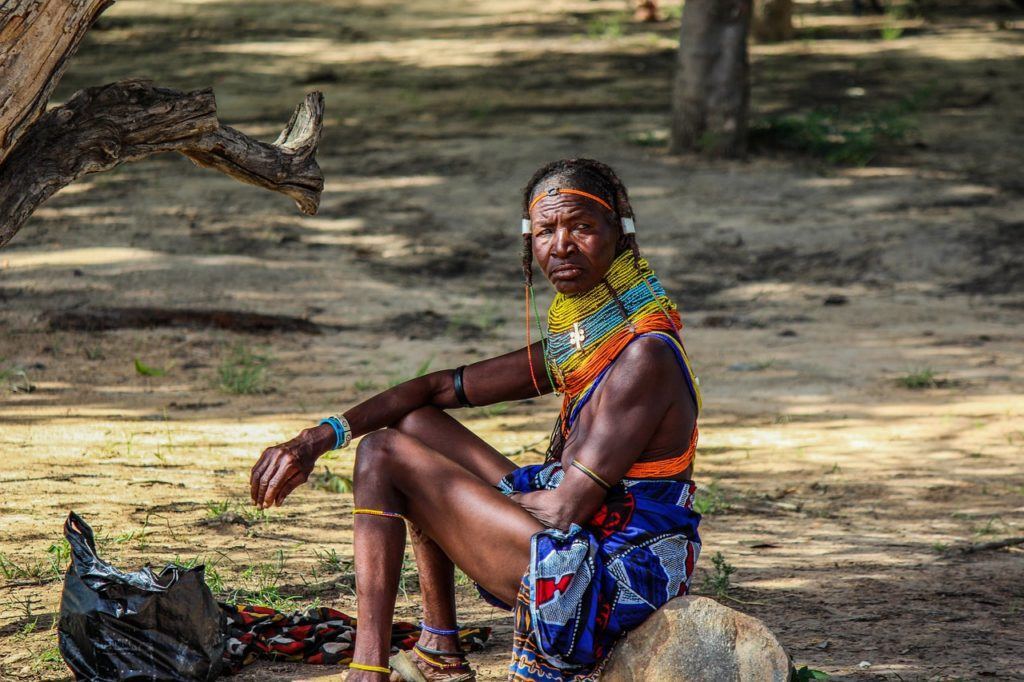
In the end, I almost never felt like I was stepping on any toes while backpacking in Mozambique. They have their own customs, yes, but Mozambicans are just like any other people out there.
They want to live and thrive just like you and, those two points aside, have more in common with you than you think. Just be respectful with them and they should return it to you.
While backpacking in Northern Mozambique, you should also be aware that it’s predominantly Swahili and thus Muslim. Many of the taboos, e.g. drinking, the “dirty” left hand, and showing certain body parts associated with Islam, will sometimes apply in this part of the country.
Granted, not everyone is necessarily a good Muslim or even Muslim at all (there are several indigenous religions practiced still), but it still pays to have some awareness.
Buy Us a Coffee!
A couple of you lovely readers suggested we set up a tip jar for direct support as an alternative to booking through our links. So we created one!
You can now buy The Broke Backpacker a coffee. If you like and use our content to plan your trips, it’s a much appreciated way to show appreciation 🙂









